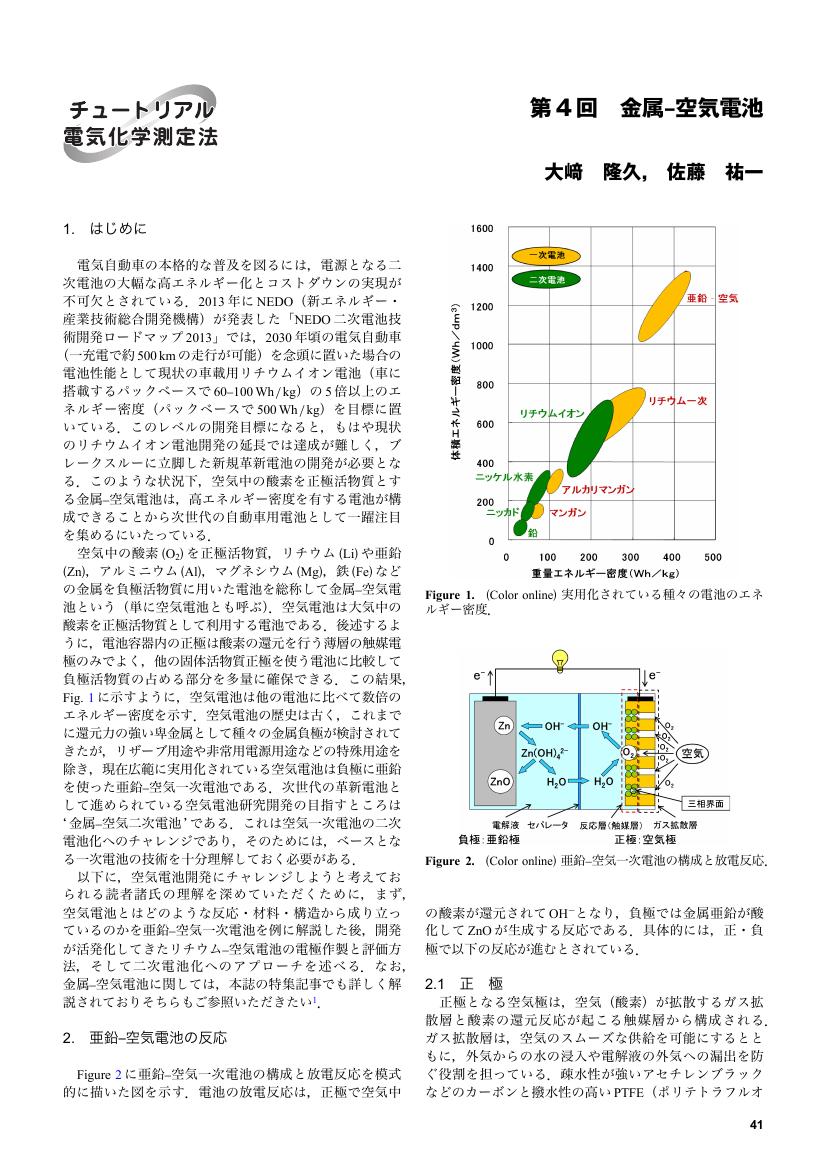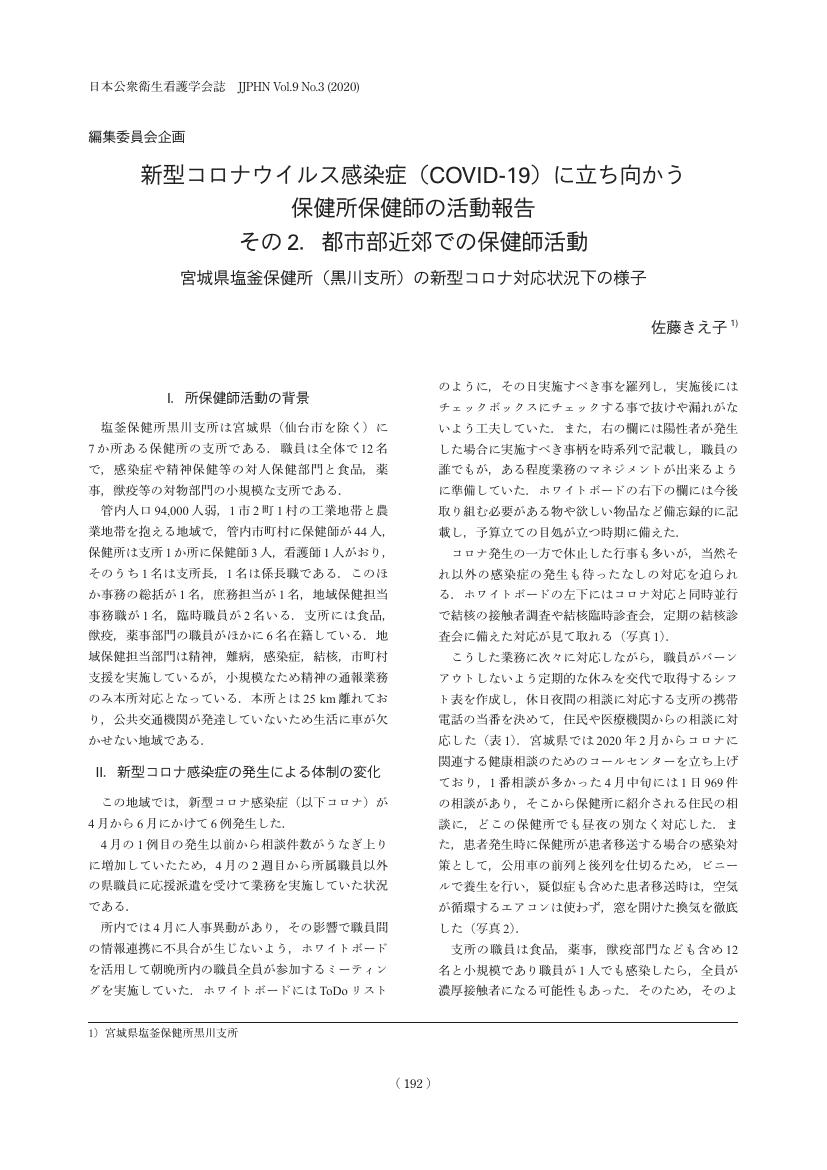2017年度は特に、2014年に英国で実施された研究評価事業であるReserach Excellence Framework(REF 2014)を踏まえた制度の改訂点とそれが大学機関の対応行動に与えた影響に焦点をあてて分析を進めた。あわせて、英国の研究評価制度を重要なモデルにしながらも独自の発展を遂げてきた豪州の評価制度である、Excellence in Research for Australia(ERA)を第3の検討対象事例として、聞き取りを資料調査による分析をおこなった。REF 2014に関する第三者委員会による検討の結果は、2016年7月にいわゆる「Stern Review」として公表され、その結果を踏まえた次回のREF(REF 2021)における評価制度の大枠は2017年11月に示されることになった。その骨子となる評価対象となる研究者の幅の拡大と1人あたりの業績点数の柔軟化は、いずれも大学側での策略的対応を抑制することを主な目的としていたが、聞き取りや資料調査の結果は、それらの改訂が別種の策略的対応を生み出す可能性を示唆している。豪州のERAについては、英国のREFとは対照的に公的補助金の選択的配分とはほぼ脱連結された評価制度が大学および研究者個人の対応行動ひいては研究の質に与える影響を中心にして検討を進めた。その結果明らかになってきたのは、豪州の場合には、補助金の獲得というよりは、むしろ評価結果が各種大学ランキングへの影響等を介して間接的に授業料収入(とりわけ留学生の授業料)に結びつくという点が大きな意味を持っていることが確認できた。以上の知見は、今後日本で本格的な研究評価がおこなわれる場合の制度設計にとって大きな意味を持つと思われるだけでなく、日英豪の大学の収益モデルについて再考を迫るものだと言える。
- 著者
- 佐藤 浩章
- 出版者
- 北海道大學教育學部 = THE FACULTY OF EDUCATION HOKKAIDO UNIVERSITY
- 雑誌
- 北海道大學教育學部紀要 (ISSN:04410637)
- 巻号頁・発行日
- vol.73, pp.239-243, 1997-06
19 0 0 0 OA 丸吉皆川家日誌 幕末維新編
- 著者
- 佐藤 大介 青葉山 古文書の会
- 出版者
- 東北大学災害科学国際研究所 歴史文化遺産保全学分野
- 巻号頁・発行日
- 2023-03-11
江戸時代には仙台藩領であった磐井郡藤沢町(岩手県一関市)の商家・丸吉(まるきち)皆川家の当主が2代・約80年にわたって 書き残した日誌のうち、嘉永6年(1853)~明治6年(1873)、約36万5千字を全文解読して収録。黒船来航以降の仙台藩の政治・経済・社会の状況が詳細に記されている。論説3編では丸吉皆川家および筆者の皆川喜平治について、文久2年(1862)の麻疹流行、戊辰戦争に関する論説3編を所収する。650頁。
19 0 0 0 OA 国家の起源と女性への暴力 : ルソー『エフライムのレヴィ人』論
- 著者
- 佐藤 淳二
- 出版者
- 北海道大学文学研究科
- 雑誌
- 北海道大学文学研究科紀要 (ISSN:13460277)
- 巻号頁・発行日
- vol.115, pp.31-64, 2005-02-28
19 0 0 0 祟り・治罰・天災 : 日本列島における災禍と宗教(<特集>災禍と宗教)
- 著者
- 佐藤 弘夫
- 出版者
- 日本宗教学会
- 雑誌
- 宗教研究 (ISSN:03873293)
- 巻号頁・発行日
- vol.86, no.2, pp.323-346, 2012
自然に関する科学的な知識を欠いていた前近代社会では、世界の他の地域と同様、列島の人々は不可避の災禍を超越的存在(カミ)の仕業と結びつけ、その出現の必然性を了解しようとした。古代社会では、自然災害はカミが人間に与えるメッセージ(崇り)と解釈された。仏教が受容され世界についての体系的な解釈が定着する中世社会になると、災害についても、その発生を治罰と救済の因果律のなかで説明しようとする傾向が強くなった。根源的存在のリアリティが衰退し、死者を彼岸の仏による救済システムに委ねることができなくなった近世では、災禍を天災として忍受する一方、不遇な死者を祖霊に上昇させるための長期にわたる儀礼や習俗が創出された。「近代化」のプロセスは、生者とカミ・死者が共存する伝統世界から後者を閉め出すとともに、特権的存在である人間を主人公とした社会の再構築にほかならなかった。東日本大震災は、そうした近代の異貌性を浮かび上がらせ、私たちの立ち位置と進路を再考させる契機となるものだった。
19 0 0 0 OA 天候変化と気分障害
- 著者
- 佐藤 純 溝口 博之 深谷 佳乃子
- 出版者
- 日本生気象学会
- 雑誌
- 日本生気象学会雑誌 (ISSN:03891313)
- 巻号頁・発行日
- vol.48, no.1, pp.3-7, 2011 (Released:2011-05-07)
- 参考文献数
- 12
うつ病性障害に代表される気分障害の出現頻度は増加しており,現代社会での大きな問題となっている.以前より天候変化が気分障害の発症と悪化に影響すると考えられているが,実証研究は行われていない.そこで,筆者らは気分障害が前線通過や悪天候の際に悪化する現象の科学的実証とそのメカニズムを明らかにする目的で,抑うつモデルラットを用いて人工環境暴露実験を行ってきた.これまでに,天気変化で見られる程度の気圧低下(大気圧から 20 hPa 減圧)により,抑うつモデルラットが示すうつ様行動が増強することを明らかにし,気分障害(うつ病)が気圧低下時に悪化する現象を動物モデルで再現することに成功した.
19 0 0 0 OA ティグライ戦争―現地で起きている「人道危機」について―
- 著者
- 佐藤 美穂
- 出版者
- 長崎大学多文化社会学部
- 雑誌
- 多文化社会研究 = Journal of Global Humanities and Social Sciences, Nagasaki University (ISSN:21891486)
- 巻号頁・発行日
- vol.8, pp.159-182, 2022-03-22
19 0 0 0 OA 太平洋戦争期中島飛行機の機体事業と生産能率
- 著者
- 佐藤 達男
- 出版者
- 経営史学会
- 雑誌
- 経営史学 (ISSN:03869113)
- 巻号頁・発行日
- vol.50, no.3, pp.26-51, 2015 (Released:2018-03-30)
This study aims to investigate Nakajima Aircraft Company's airframe business and its production efficiency during WW II in comparison with Mitsubishi Heavy Industries.During the Pacific War, Japanese aircraft production was essentially based on job shop system for parts fabrication and sub-assembly. Nakajima Aircraft Company the largest aircraft manufacturer of war-time Japan and Mitsubishi Heavy Industries the second largest utilized both job shop and production line systems for their airframe final assembly lines depending on each plant situations. The United States Strategic Bombing Survey reports evaluated that Nakajima's airframe production system was more developed than that of Mitsubishi, which adhered to original, old-fashioned job shop system. This was substantiated from the fact that Nakajima expanded its production by 1944 to more than eight times of its 1941 production, and Mitsubishi produced only three times for the same period.However, in production efficiency measured by airframe weight produced per month per employee, Mitsubishi was predominant until August to October 1944. A positive correlation was observed between production efficiency and monthly number of airframe production. Mitsubishi's improvement degree of production efficiency agreed well with the estimation by learning curve theory, but Nakajima's improvement of production efficiency far exceeded the estimation. This is considered to be the effect that Nakajima's labor utilization rate, which was approximately half of that of Mitsubishi in September 1943, might have increased rapidly as the monthly airframe production increased. The difference of the final assembly line did not have decisive influence on the production efficiency, but the increase in the number of monthly airframe production was influential.The production efficiency continuously increased as the monthly airframe production increased, and then dropped sharply from the end of 1944 and after due to the rapid decline of monthly production, which was caused by shortages of essential materials and engines, US air raids from November 1944 and after, factory evacuation, and labor shortage.
19 0 0 0 OA 今川氏の制札の研究 -南北朝期を中心に-
- 著者
- 富澤 一弘 佐藤 雄太
- 出版者
- 高崎経済大学
- 雑誌
- 高崎経済大学論集 (ISSN:04967534)
- 巻号頁・発行日
- vol.55, no.1, pp.1-14, 2012-06
19 0 0 0 OA エクスポージャーの治療効果促進のための方略に関する最近の研究動向
- 著者
- 佐藤 友哉 前田 駿太 山下 歩 千先 純 茶原 仁美 嶋田 洋徳
- 出版者
- 早稲田大学人間科学学術院心理相談室
- 雑誌
- 早稲田大学臨床心理学研究
- 巻号頁・発行日
- vol.13, no.1, pp.109-118, 2014-01
19 0 0 0 OA オルトメトリクスは論文評価を変えるか - ソーシャルメディアで算出する新たな指標 -
- 著者
- 佐藤 翔 吉田 光男
- 出版者
- (株)化学同人
- 雑誌
- 化学 = Chemistry (ISSN:04511964)
- 巻号頁・発行日
- vol.71, no.2, pp.23-28, 2016-02
従来のピア・レビューや被引用数の問題点や限界が指摘されるなか、TwitterやFaceboookなどのソーシャルメディアで言及された指標をもとに評価する「オルトメトリクス」が登場し、注目されている。新たな指標から何がわかるのか、これまでの指標にとって代わるのか、その可能性を探ってみよう。
19 0 0 0 OA 北海道における日常食中の放射性セシウムについて(2011~2012)
- 著者
- 市橋 大山 青柳 直樹 佐藤 千鶴子 内野 栄治 伊藤 八十男 桂 英二
- 出版者
- 公益社団法人 日本食品衛生学会
- 雑誌
- 食品衛生学雑誌 (ISSN:00156426)
- 巻号頁・発行日
- vol.54, no.2, pp.117-120, 2013-04-25 (Released:2013-05-15)
- 参考文献数
- 7
- 被引用文献数
- 3
北海道における日常食中の放射性セシウム(134Csおよび137Cs)量について調査を行った.札幌市およびその近郊に住む成人から提供を受けた1日分の食事(陰膳方式)を灰化して試料とした.測定にはGe半導体検出器を用いた.本調査における日常食中の放射性セシウムの最大値(平均値)は,2011年7月1.0 Bq/人・日(0.24 Bq/人・日),11月1.3 Bq/人・日(0.30 Bq/人・日),2012年2月3.9 Bq/人・日(1.0 Bq/人・日),そして7月0.34 Bq/人・日(0.12 Bq/人・日)であった.本調査における放射性セシウムの最大値3.9 Bq/人・日の食事を1年間摂取し続けたときの預託実効線量は0.022 mSv/年であった.
18 0 0 0 OA 大学院教育のPDCA : 「研究基礎」の事例を中心にして
- 著者
- 佐藤 郁哉 Ikuya Sato
- 出版者
- 同志社大学商学会
- 雑誌
- 同志社商学 = Doshisha Shogaku (The Doshisha Business Review) (ISSN:03872858)
- 巻号頁・発行日
- vol.75, no.1, pp.1-26, 2023-06-30
同志社大学商学研究科において2018年度いらい開講されてきた「研究基礎」の概要について、これまでの授業実践の内容を中心にして解説するとともに、同授業科目の今後の方向性について検討していく際に参考になると思われる幾つかの論点を、講義担当教員としての体験を踏まえて提出した。
18 0 0 0 OA 第4回 金属–空気電池
- 著者
- 大﨑 隆久 佐藤 祐一
- 出版者
- The Electrochemical Society of Japan
- 雑誌
- Electrochemistry (ISSN:13443542)
- 巻号頁・発行日
- vol.83, no.1, pp.41-48, 2015-01-05 (Released:2015-01-05)
- 参考文献数
- 9
18 0 0 0 OA 仙台藩の洋式帆船 開成丸の航跡 幕末の海防構想と実践の記録
- 著者
- 佐藤 大介 黒須 潔 井上 拓巳
- 出版者
- 東北大学災害科学国際研究所 歴史文化遺産保全学分野
- 巻号頁・発行日
- 2022-03-11
幕末に仙台藩が独力で建造した洋式帆船・開成丸の建造経緯や運行を支えた藩の 海運システムを解明。さらに背景として、艦隊建設を通じた藩の再建と体制改革を意図したことを明らかにした。史料編では、万延元年(1860)冬から翌年春にかけての浦賀・江戸方面への航海の様子を綴った「ふなわたり日記」(仙台市民図書館所蔵)、建艦を主導した仙台藩校養賢堂学頭・大槻習斎の関連記録、仙台 城下町商人の記録など初公刊史料を含む関連史料41点を掲載。
18 0 0 0 OA 携帯メールへの絵文字付与が女子大学生の印象形成に与える効果
- 著者
- 北村 英哉 佐藤 重隆
- 出版者
- 日本感情心理学会
- 雑誌
- 感情心理学研究 (ISSN:18828817)
- 巻号頁・発行日
- vol.17, no.2, pp.148-156, 2009-11-25 (Released:2010-05-08)
- 参考文献数
- 17
- 被引用文献数
- 4 1
This article examines the role of pictograms in text-messaging. Past research has shown that using emoticons in casual e-mail messages facilitates friendly impressions, while using emoticons in more formal and polite messages hinders sincere impressions of the sender. To examine how pictograms in text-messaging affects impressions of the sender, one-hundred and five female students were presented with different text-messages varying in pictogram use and message formality, and were subsequently asked to rate the impressions of each sender on multiple dimensions. The results showed a significant main effect of pictogram use as well as an interaction effect of pictograms and message formality. Use of pictograms generally facilitated favorable and friendly impressions towards the sender. However, whereas lack of pictograms leads to less sincere impressions for casual messages, pictograms did not affect sincerity for formal messages. The important role of pictograms in conveying emotional information in text-messaging is discussed.
18 0 0 0 OA 「原子力平和利用」と岸信介の核政策思想
- 著者
- 佐藤 正志
- 雑誌
- 経営情報研究 : 摂南大学経営情報学部論集 = Journal of Business Administration and Information (ISSN:13402617)
- 巻号頁・発行日
- vol.22, no.2, pp.29-48, 2015-02
日本人は原爆(核)被害を受けたにも関わらず、「原子力平和利用」を受容し、世界第3 位の原発大国を作り上げていった。本稿では、最近の「原子力平和利用」に関する研究を整理しつつ、「平和利用」を推進した政治的リーダーのひとりであった岸信介の日米安保改定交渉や「反核外交」、事前協議に関する密約問題などを取りあげ、彼がいかに原子力技術を理解し、核政策を行ったのかを概観し、その思想的背景を考察する。
18 0 0 0 OA オタク絵馬とは何か : 宮城縣護國神社の絵馬調査結果とその分析
- 著者
- 佐藤 善之
- 出版者
- 北海道大学観光学高等研究センター、鷲宮町商工会 = Center for Advanced Tourism Studies, Hokkaido University, Washimiya Town Commerce and Industry Association
- 雑誌
- CATS 叢書 (ISSN:03855961)
- 巻号頁・発行日
- vol.4, pp.115-127, 2010-03-20
次世代まちおこしとツーリズム : 鷲宮町・幸手市に見る商店街振興の未来 = Community Development and Tourism for the Next Generation
18 0 0 0 OA その2.都市部近郊での保健師活動 宮城県塩釜保健所(黒川支所)の新型コロナ対応状況下の様子
- 著者
- 佐藤 きえ子
- 出版者
- 一般社団法人 日本公衆衛生看護学会
- 雑誌
- 日本公衆衛生看護学会誌 (ISSN:21877122)
- 巻号頁・発行日
- vol.9, no.3, pp.192-196, 2020 (Released:2020-12-28)


